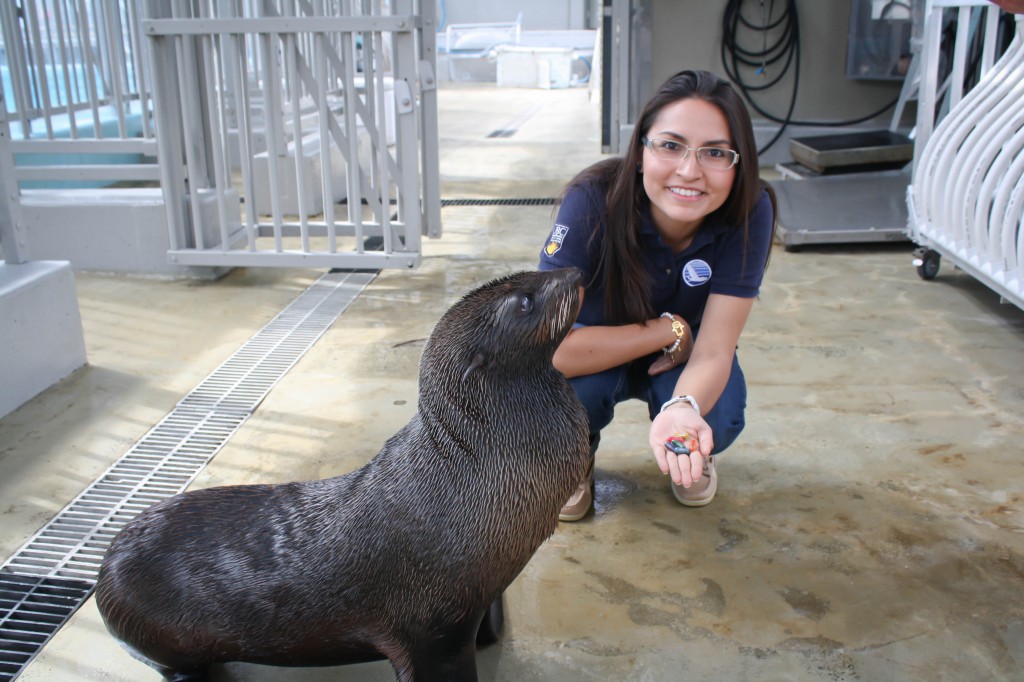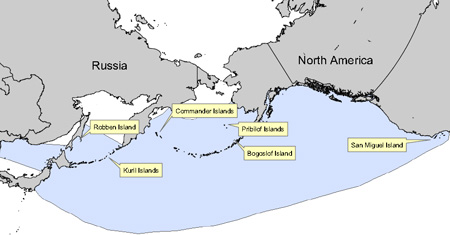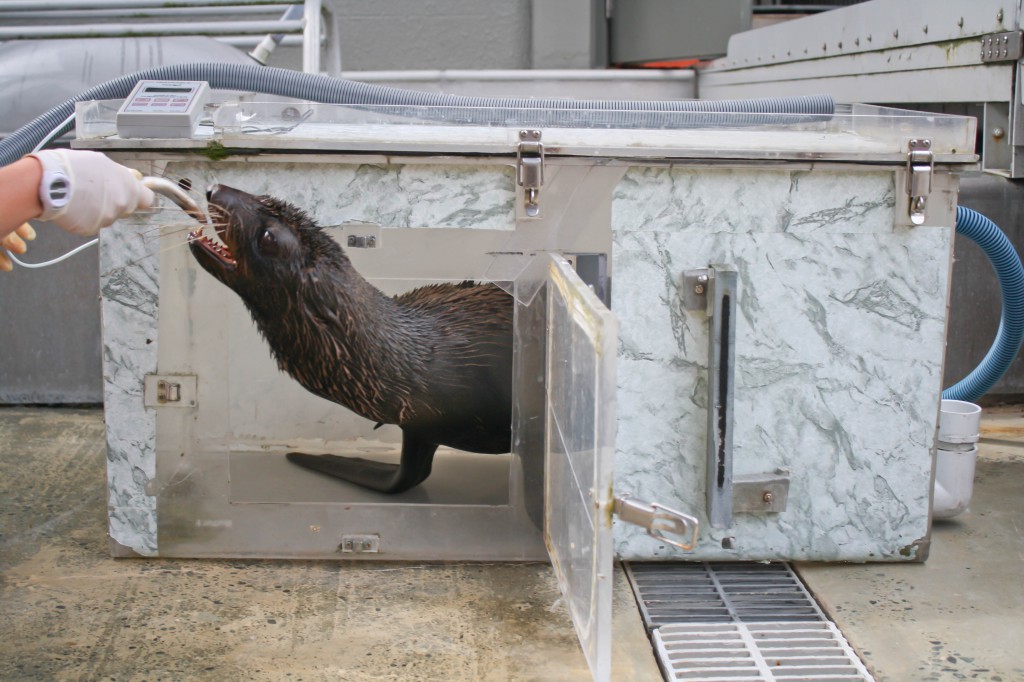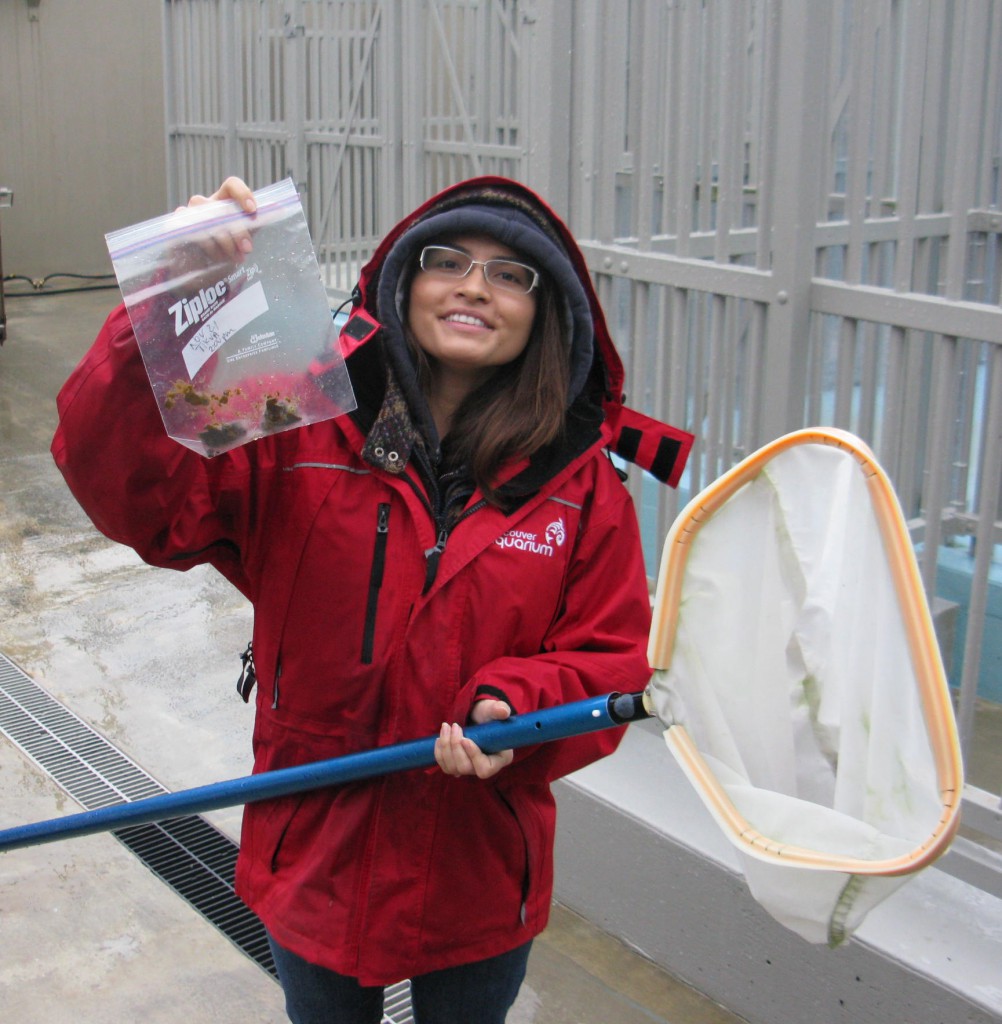 Alumni
Alumni
MSc. 2016
Tel: 604.822.8181
Fax: 604.822.8180
Education: BSc (Hons)- Biology at Memorial University of Newfoundland (2006-2010)
Research Interests: Marine Mammal physiology, bioenergetics and nutrition.
Research Area: North Pacific Ocean, Alaska and British Columbia
Does diet quality affect the ability of Northern fur seals (Callorhinus ursinus) to meet daily energy requirements?
Background
 Northern fur seals inhabiting the North Pacific Ocean and Bering Sea have declined dramatically since the 1970’s. A possible factor affecting the population has been hypothesized to be due to changes in prey qual
Northern fur seals inhabiting the North Pacific Ocean and Bering Sea have declined dramatically since the 1970’s. A possible factor affecting the population has been hypothesized to be due to changes in prey qual
ity and quantity available in the area. The most recognized prey items of fur seals are: juvenile Pollock (Theragra chalcogramma), Atka mackerel (Pleurogrammus monopterygius), capelin (Mallotus villosus) and herring (Clupea pallasii), as well as various squid species (i.e.Gonatidae spp.).
“Energetics” is the study of the metabolic requirements, energy transformation and energy output of animals. The gross energy and macronutrients (i.e., lipid and protein) contained within prey is in reality not equivalent to the energy and macronutrients gained by predators because the digestive processes can be costly. Th is means that the energetic and nutritional gained by a predator is in part depend on the predator’s physiological capability to absorb digestive products. Therefore, understanding how changes in diet composition affect the energetic and nutritional budgets of animals is essential for making accurate inferences about the impacts that changes in prey availability may have on populations.
The goal of our study was to investigate the fur seal’s efficiency of energy and macronutrient transformation and absorption when fed eight different diets. Ultimately, we hope that the results from our study will be an essential step in understanding the relationship between diets and energy budgets of northern fur seals, and aid in evaluating whether dietary shifts are negatively affecting the energetic status of northern fur seals in the North Pacific and Bering Sea.
Research goals
I am interested in investigating: 1) To measure the changes in net energy gain by fur seals when consuming different diets composed of various prey. 2) To quantify the metabolic cost of digestion of the different diets. 3) To quantify the digestive efficiency of the various macronutrients (i.e., lipid and protein) contained in the different diets. 4) To test the potential effect of a mixed-species diets on digestive efficiency of both energy and macronutient. 5) Potential short-term physiological changes in the fur seals’ metabolism due to dietary shifts.
Approach and results
 The fur seals were housed at the Marine Mammal Energetics and Nutrition Laboratory at the Vancouver Aquarium, where they were fed eight different diets for 3 weeks each. Diets consisted of herring, walleye pollock, capelin and Magister squid, fed alone or in combination. Net energy was quantified by measuring fecal energy loss, urinary energy loss, and the heat increment of feeding. Fecal samples were collected for proximate composition as well as the prey used in the diets. Because of logistical constrains I was not able to collect urinary waist but urinary energy losses are known to be proportional to nitrogen intake. Our study is the first one to quantify the energetic cost of digestion of fur seals.
The fur seals were housed at the Marine Mammal Energetics and Nutrition Laboratory at the Vancouver Aquarium, where they were fed eight different diets for 3 weeks each. Diets consisted of herring, walleye pollock, capelin and Magister squid, fed alone or in combination. Net energy was quantified by measuring fecal energy loss, urinary energy loss, and the heat increment of feeding. Fecal samples were collected for proximate composition as well as the prey used in the diets. Because of logistical constrains I was not able to collect urinary waist but urinary energy losses are known to be proportional to nitrogen intake. Our study is the first one to quantify the energetic cost of digestion of fur seals.
Our study demonstrates that northern fur seals attained significant differences in net energy gain across experimental diets. These differences were driven by both the high energetic cost of protein digestion and the significantly higher energetic return of fattier diets. This highlights the importance of considering the individual digestion of each component of a diet to understand how fur seals obtain energy from particular prey items. Our study also highlights how differences in gross prey quality between prey items become exaggerated during the course of digestion. In addition, our results contradict the theory that mixed-species diets provide an energetic advantage to fur seals over single-species diets. Furthermore, there was no effect of dietary changes on secondary metabolic costs of the fur seals, such as resting metabolism or the cost of thermoregulation. Collectively, our findings indicate that northern fur seals assimilate a higher proportion of the energy contained in high quality (lipid-rich) prey, and a lower proportion of the energy contained in lower quality prey such as pollock. This difference in the net energy gained from different prey species has implications for determining why fur seal populations are declining in the central Bering Sea.
|
Links I am very grateful for the help and support provided by: |
||||
 |
 |
|||
